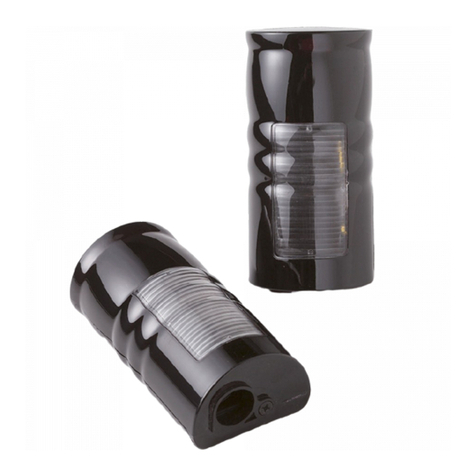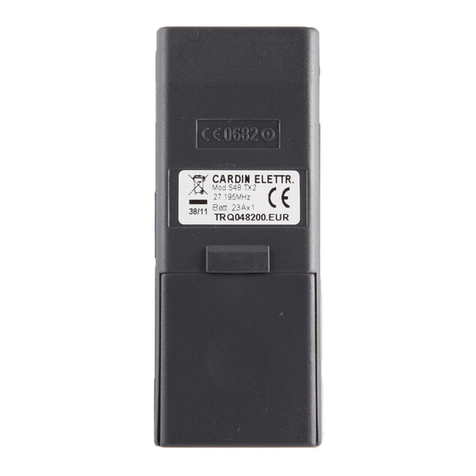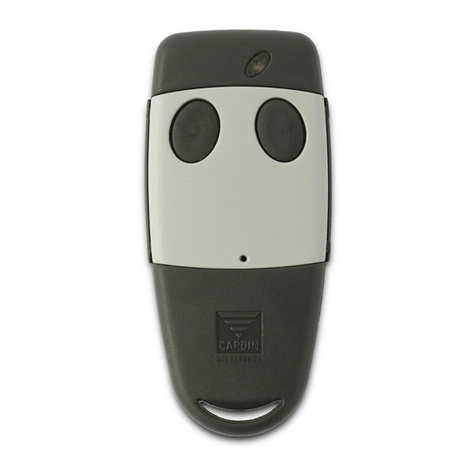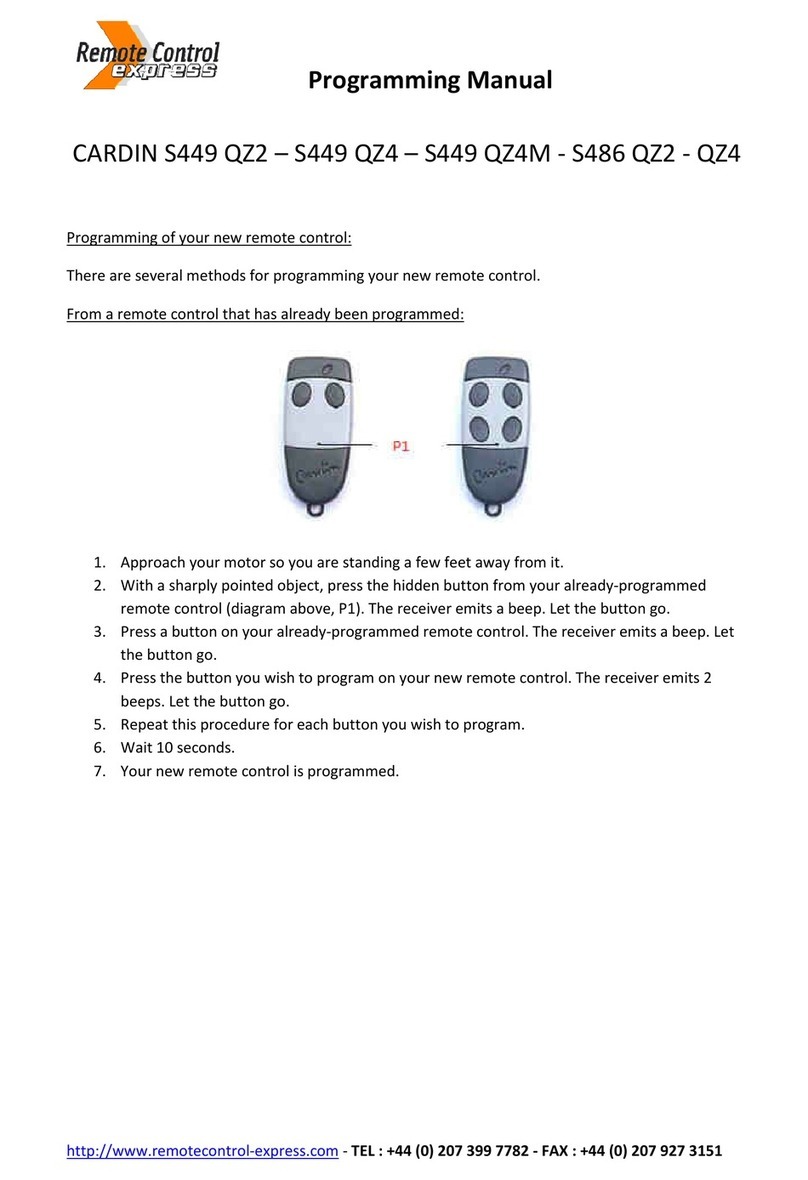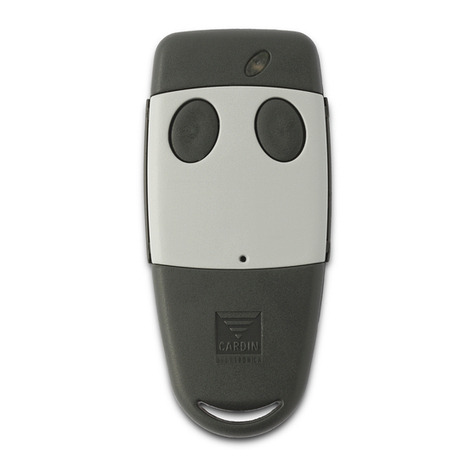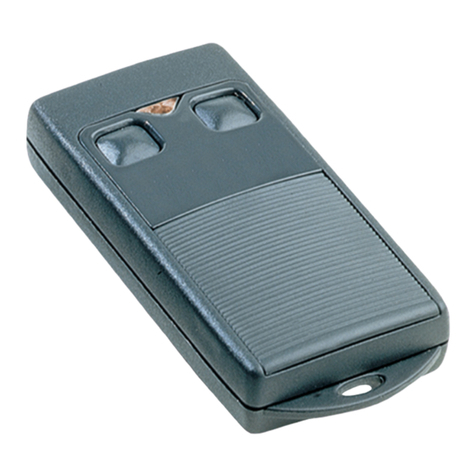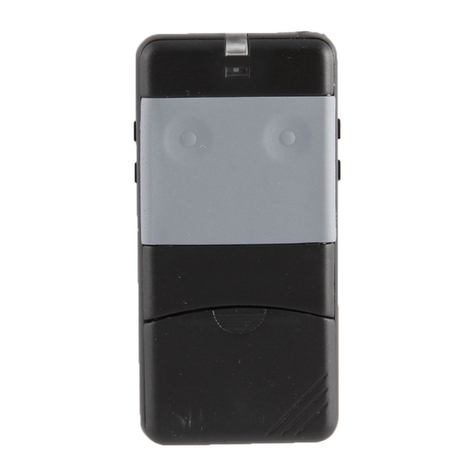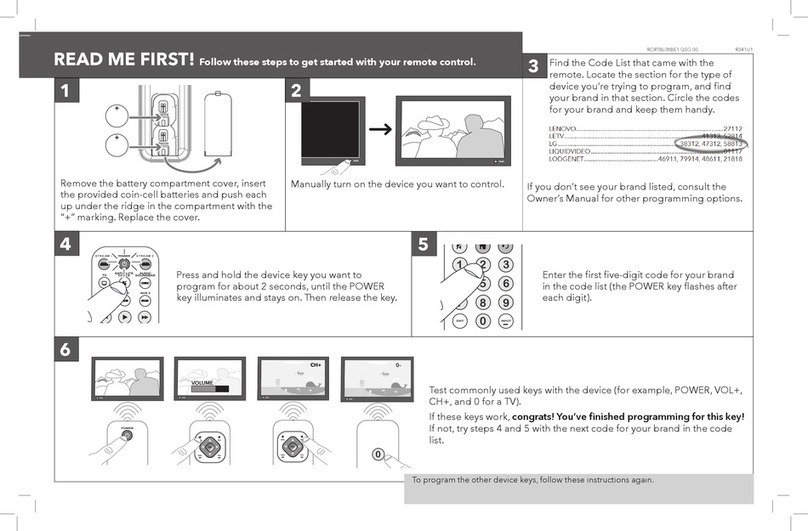9
CARATTERISTICHE TECNICHE
RICEVITORE
- frequenza di ricezione ..................................................................................................................433,92 MHz
- sensibilità (per segnale a buon ne).......................................................................................-110dBm 0,7µV
- modulazione ..............................................................................................................................................FSK
- impedenza di ingresso antenna............................................................................................................... 50 Ω
- alimentazione ricevitore .............................................................................................................12/24V ac/dc
- assorbimento a riposo/con 1 relé attivato.......................................................................................20/40 mA
- massima potenza commutabile dal relé con carico resistivo:
carico in ac/dc .............................................................................................................................. 60VA/24 W
tensione massima ........................................................................................................................... 30V ac/dc
- ritardo all'attivazione del relè....................................................................................................... 80 ÷ 100 ms
- temperatura di esercizio.............................................................................................................-20°…+75 °C
TRASMETTITORE
- frequenza di trasmissione ...........................................................................................................433,92 MHz
- potenza apparente irradiata .................................................................................-10…-7dBm (100-200 µW)
- modulazione ....................................................................................................................................... FM/FSK
- alimentazione (batteria litio) .................................................................................................. 3V (1 x CR2032)
- assorbimento......................................................................................................................................... 18 mA
- temperatura di esercizio.............................................................................................................-10°…+55 °C
- umidità relativa........................................................................................................................................<95%
- tipo di codica ...............................................................................................................................rolling code
- numero di combinazioni complessive (66 bit):............................................................................................266
- numero delle funzioni (canali).........................................................................................................................4
- autospegnimento:....................................................................................................dopo almeno 20 secondi
- portata (trasmettitori tascabili)......................................................................................................100 - 150 m
- portata (trasmettitori industriali) .............................................................................................................200 m
- portata (trasmettitori industriali con antenna esterna) ..........................................................................700 m


